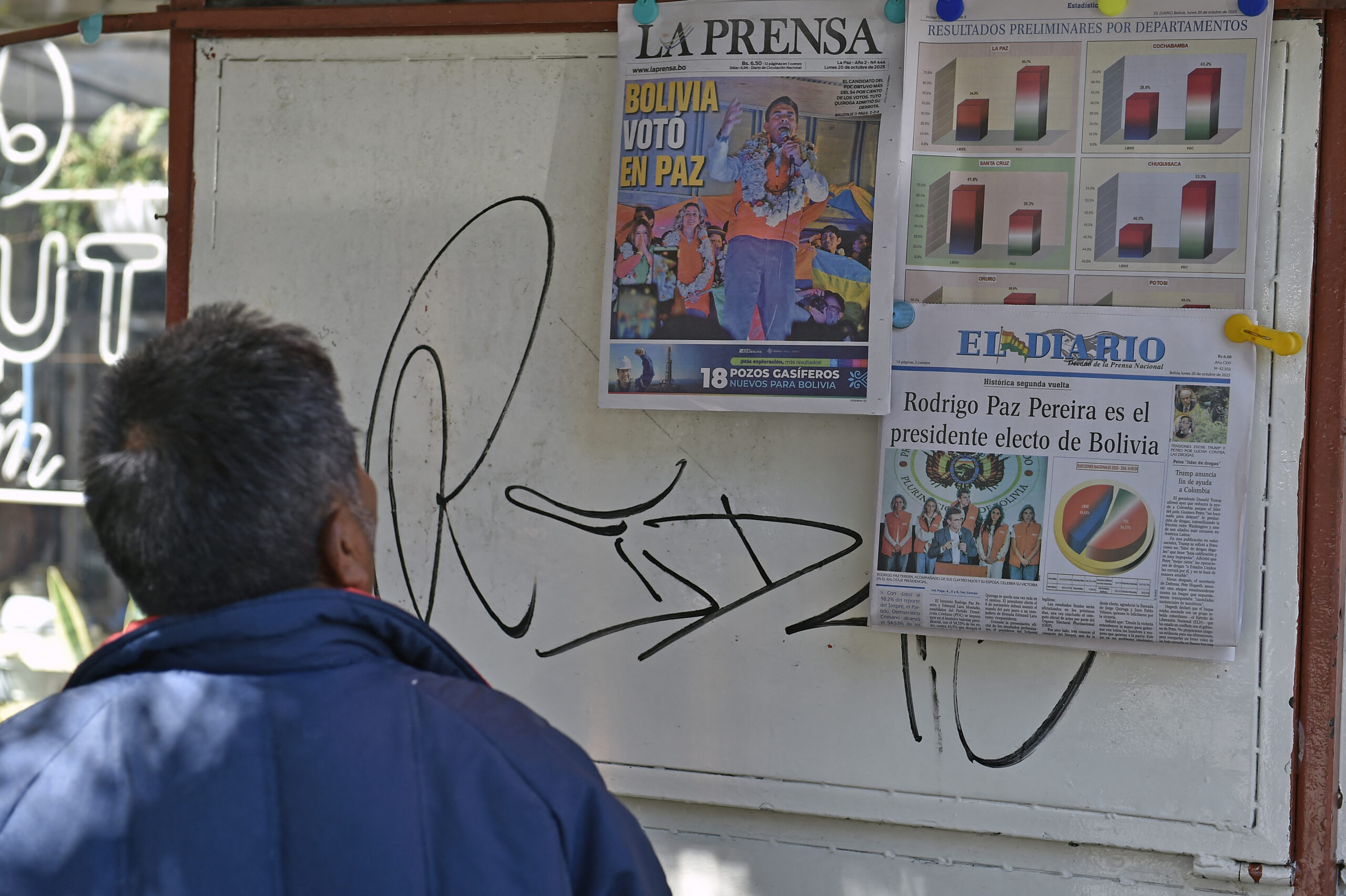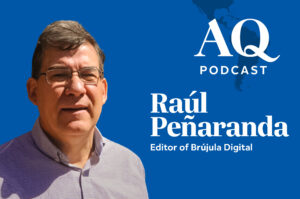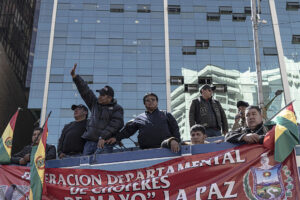As Rodrigo Paz gets ready to become Bolivia’s next president, his administration will have pressing decisions to make immediately after the November 8 inauguration. While the country is under stress on many politically sensitive fronts, Paz should also prioritize the unsustainable government debt burden, which is already nearly as large as the entire economy.
Several solutions are available, and all require decisive action to address a longstanding issue. On the campaign trail Paz ruled out an International Monetary Fund rescue package, however his stance will be put to the test in the months to come, as Bolivia’s international reserves are abysmally low and the country will soon need to pay $388 million to honor its national debt.
Compounding this, Bolivia’s macroeconomic circumstances are dire. Real GDP growth slowed from an average pace of 4% over the past 20 years to just 0.7% in 2024 (the last full year for which we have data) as once-booming hydrocarbon production faded, and the Movimiento al Socialismo (MAS) government struggled to fund its statist model. The outlook deteriorated further in 2025 amid rising external imbalances and local political uncertainty, and real GDP is likely to contract to about -1% this year, according to some private sector estimates and credit firms such as Fitch Ratings.
Inflation, which until last year was in the low single digits, has skyrocketed to over 23%, driven by rising food prices and import shortages. Bolivia has struggled to pay for imports, especially fuel, due to a lack of dollars in the country, as the MAS government’s insistence on an overvalued fixed exchange rate policy has bled the country’s foreign exchange reserves to critical levels.
The reserves’ collapse—from $13.4 billion a decade ago to just $103 million in September—has left the government with very little room to maneuver. While the central bank theoretically holds $3.1 billion in gold reserves, these are of little practical use. Current law prevents their sale, and reports suggest that at least $1 billion are already tied up in opaque financing arrangements. In reality, Bolivia’s usable reserves are far smaller than the headline figure suggests.
Meanwhile, the fiscal deficit was over 10% of GDP in 2024, and the IMF forecasts it will reach 13% of GDP this year. Most of the deficit has been financed by the central bank (i.e., money printing), further pressuring inflation and reserves, as locals rush for the relative safety of U.S. dollars. Some Bolivians who have been unable to source dollars have even turned to crypto assets like USDT rather than continue to hold bolivianos.
Finally, the government’s reported debt stock is over 93% of GDP, but that figure is understated because the country’s external debt (currently estimated at 28% of GDP) is measured at the overvalued official fixed exchange rate of 6.9 bolivianos per dollar. Once adjusted to the unofficial, or “parallel” exchange rate available through informal dealers or crypto markets (currently about 12 to 14 bolivianos per U.S. dollar), debt-to-GDP rises to well above 100%.
To make matters worse, one of the first orders of business for the new government will be how to manage external debt payments of $388 million due in March 2026. It is not clear the government has the resources to make that payment. Credit rating companies are well aware of this risk and earlier this year Fitch Ratings, Moody’s and S&P downgraded Bolivia to CCC category at least, warning that the country may face a balance of payments crisis.
What to do about it?
Bolivia’s economic problems are complex, but if the new government acts with purpose there are clear solutions. Specifically, it should quickly abandon the fixed exchange rate policy, switch to an inflation targeting regime, announce a credible plan to reduce the fiscal deficit, and restructure its external debt.
These reforms will help stabilize the economy, restart U.S. dollar inflows, and allow for longer-term structural reforms to follow later on. Ideally, they should be undertaken with the support from the IMF. A program, like an Extended Fund Facility, would not only provide much-needed financing but also lend technical expertise and credibility to painful reforms, helping to reassure both markets and Bolivians that the country is moving toward a more sustainable path. Paz has indicated he supports some of these measures, although he has been skeptical, at least publicly, about engaging with the IMF.
When it comes to debt restructuring, the new government should seek to address both liquidity and solvency concerns. First, it should push out debt service payments by at least several years to free up fiscal space to support the population throughout the economic transition. Second, it should reduce the stock of the country’s dollar debt.
The good news is that much of Bolivia’s external debt is concessional and held by the official sector, and if the new government signs on to an IMF program, the IMF and other international financial institutions are likely to work with it constructively to ease near-term debt service constraints. However, a significant portion of Bolivia’s external debt is held by commercial creditors and bilateral lenders outside the traditional Paris Club framework, including China. These creditors will be less inclined to grant relief, but without their participation, restructuring will fall short of restoring sustainability. Paz will need to use early political capital to bring these creditors to the table and secure relief.
Reforms and debt
A debt restructuring is never easy, but a negotiated one underpinned by reform is far better than a disorderly default that would deepen hardship and instability for average Bolivians. To entice external creditors, the government could offer creative solutions like value-recovery instruments (VRIs) that pay out only if reforms succeed—perhaps tied to growth performance or future gas or lithium exports if those sectors are reformed and become more productive.
Suriname’s 2023 debt restructuring could serve as an example, as bondholders agreed in that case to reduce the stock of debt in exchange for VRIs that pay 30% of oil royalties from a key gas field, subject to certain restrictions that limit the maximum payout by the government. The key will be to produce a long-term, definitive solution that works for all stakeholders, as half-measures on external debt are likely to backfire in the future.
Bolivia’s new president will inherit not only a fragile economy but also the responsibility to prevent it from sliding into chaos. The new Paz government will have only a brief window to act boldly before the costs of delay multiply. Restructuring is not optional, it’s inevitable. The only question is whether Bolivia does it on its own terms or waits until default strips it of control.










